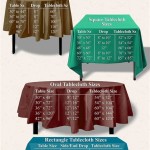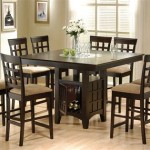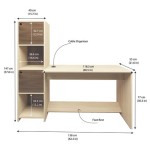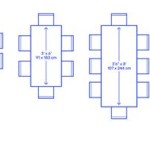Height of a Ping Pong Table: The Definitive Guide
The game of ping pong, also known as table tennis, enjoys global popularity, played recreationally and professionally alike. While various factors contribute to a quality game, the specifications of the equipment play a crucial role. Among these, the height of the ping pong table stands out as a fundamental element that directly impacts gameplay, fairness, and the overall experience. Understanding the standard height and its rationale is essential for anyone involved with the sport, from casual players to tournament organizers.
The International Table Tennis Federation (ITTF), the governing body for table tennis worldwide, meticulously defines the regulations for all aspects of the game, including equipment. This standardization ensures a level playing field across different competitions and locations. The precise specifications for table dimensions, including height, are integral to maintaining this consistency and promoting fair play.
This article delves into the specific height standard for ping pong tables, exploring the reasoning behind this dimension and its impact on the game. It will also consider practical implications for setting up table tennis equipment and address potential variations and considerations for specialized circumstances.
The Standard Height Specification
The ITTF regulations stipulate that the height of a ping pong table must be 76 centimeters (30 inches) from the floor to the upper surface of the table. This dimension is a global standard, adhered to in professional tournaments, amateur competitions, and recreational settings. This height is critical for several reasons, affecting the trajectory of the ball, the speed of the game, and the overall dynamics of play.
The rationale behind specifying a precise height standard is to ensure consistent ball bounce and prevent unfair advantages based on variations in table height. A table that is too low would result in a lower ball trajectory, making it easier to hit with downward strokes and potentially giving an advantage to players who prefer aggressive, attacking styles. Conversely, a table that is too high would lead to a higher ball trajectory, which could favor defensive players who rely on looping and spinning the ball.
The specified height of 76 centimeters strikes a balance, allowing for a dynamic range of shots and playing styles. It allows for topspin, backspin, and flat hits, promoting a more diverse and engaging game. Maintaining this standard is essential for upholding the integrity of the sport and ensuring a fair and enjoyable experience for all participants.
Impact of Table Height on Gameplay
The height of the ping pong table has a profound impact on various aspects of the game. The correct table height is essential for accurate ball bounce. The ITTF requires that a standard ball, when dropped from a height of 30 cm (approximately 11.8 inches), should bounce 23 cm (approximately 9 inches). This bounce consistency is directly influenced by the table's height and surface material.
Deviation from the standard height can significantly affect the trajectory of the ball. Imagine a table that is even a few centimeters too low. The ball will not bounce as high, making it harder to execute effective serves and reducing the opportunity for strategic shot placement. This can disadvantage players who rely on the ball's trajectory to create spin and control the game.
The standard height also contributes to the speed and rhythm of the gameplay. A lower table can lead to faster, more aggressive rallies, as players have less time to react to the ball. This can de-emphasize skill and strategy, making the game more about pure speed and power. Conversely, a higher table might slow down the game, favoring defensive players who can more easily return shots with high spin and placement.
Furthermore, the height of the table influences the players' physical positioning and movement. The 76-centimeter standard allows players to maintain a comfortable stance and move freely around the table. A table that is too low might force players to crouch uncomfortably, limiting their range of motion and potentially leading to physical strain. A table that is too high can require players to reach excessively, affecting their balance and control.
Therefore, the standardized height of a ping pong table is not arbitrary but rather a carefully determined dimension that considers the physics of the ball, the strategic nuances of the game, and the physical requirements of the players. Adherence to this standard is vital for preserving the integrity and enjoyability of table tennis.
Practical Considerations for Setting Up a Ping Pong Table
When setting up a ping pong table, ensuring the correct height is paramount. While most commercial tables will adhere to the standard 76-centimeter height, it is always advisable to verify the dimension, especially when dealing with older or homemade tables. A simple measuring tape or ruler can be used to accurately check the height at various points around the table's perimeter.
The surface on which the table is placed also plays a crucial role. An uneven floor can cause the table to tilt, affecting the ball bounce and potentially distorting the perceived height. It is essential to place the table on a level surface, using shims or adjustable feet if necessary to compensate for any irregularities. A spirit level can be used to ensure that the table surface is perfectly horizontal.
For professional or tournament play, the ITTF requires even stricter adherence to the height standard. Tournament organizers typically use specialized measuring devices to ensure compliance. Any discrepancies are promptly addressed to maintain a fair and consistent playing environment. The ITTF also recommends that tables be checked regularly for any signs of warping or damage that could affect the height or surface flatness.
Another practical consideration is the lighting around the table. Adequate and uniform lighting is essential for players to accurately track the ball's trajectory. Shadows or glare can distort the perceived height and movement of the ball, affecting gameplay. Positioning the table in a well-lit area or using appropriate artificial lighting can significantly enhance the playing experience.
The overall environment surrounding the table also contributes to the quality of play. Sufficient space around the table is necessary for players to move freely and execute shots effectively. The ITTF recommends a minimum playing area of 14 meters long, 7 meters wide, and 5 meters high. While this may not always be feasible in recreational settings, it is essential to provide as much space as possible to allow for comfortable and unrestricted movement.
Regular maintenance of the ping pong table is crucial for preserving its integrity and ensuring consistent performance. The table surface should be cleaned regularly to remove dust and debris that can affect ball bounce. Any cracks or damages should be repaired promptly to prevent further deterioration and maintain a smooth, even playing surface.
Variations and Special Considerations
While the 76-centimeter height is the universally accepted standard for ping pong tables, there may be circumstances where slight variations are considered. For example, in some recreational settings, particularly when children are playing, a slightly lower table might be used to make the game more accessible. However, it is important to note that this is not in accordance with ITTF regulations and should be considered a modified version of the game.
There are also specialized tables designed for players with disabilities. These tables may have adjustable heights to accommodate wheelchair users or individuals with limited mobility. The ITTF recognizes the importance of inclusivity and promotes modifications to equipment that allow people of all abilities to participate in the sport. These adaptations are crucial to make table tennis accessible to everyone who wishes to play.
Another consideration is the type of table used. There are various types of ping pong tables available, including indoor tables, outdoor tables, and conversion tops. While all commercially produced tables should adhere to the standard height, the materials and construction may vary depending on the intended use. Outdoor tables, for instance, are typically made of more durable materials that can withstand exposure to the elements.
Vintage ping pong tables might not always conform to the current ITTF standards. These tables, often found in antique shops or older recreational facilities, may have slightly different dimensions, including height. While they can be interesting from a historical perspective, they should not be used for serious competition or training purposes.
Finally, homemade or custom-built ping pong tables present a unique set of considerations. When constructing a table from scratch, it is crucial to adhere to the ITTF specifications as closely as possible. This includes ensuring the correct height, dimensions, and surface flatness. Accurate measurements and careful construction are essential for creating a table that provides a fair and enjoyable playing experience.
In conclusion, the height of a ping pong table is not merely a random dimension but a carefully determined standard that is integral to the integrity and playability of the game. Understanding the rationale behind this standard and adhering to it is essential for anyone involved with table tennis, from casual players to professional athletes. By ensuring that tables meet the specified height, we can promote fair play, enhance the playing experience, and uphold the traditions of this globally popular sport.

Table Tennis Dlgsc

Table Tennis Measurements Size And Dimensions Cornilleau

Ping Pong Table Dimensions Diy Outdoor

To Choose The Right Table Tennis Size For You Stiga Sports

To Choose The Right Table Tennis Size For You Stiga Sports

Table Tennis Room Size Court And Dimensions

Table Tennis Tables Which Is Right For Me Hart Sport New Zealand

Ping Pong Table Dimensions The Guy

Table Tennis Buyer S Guide Liberty
Table Tennis Tables Dimensions Drawings Com
Related Posts








